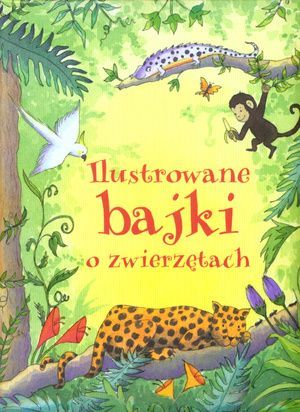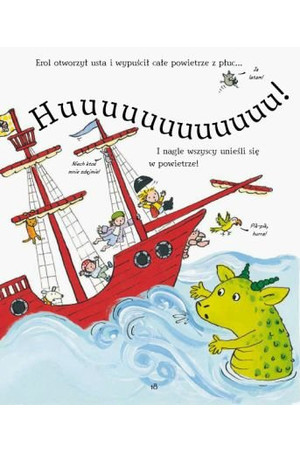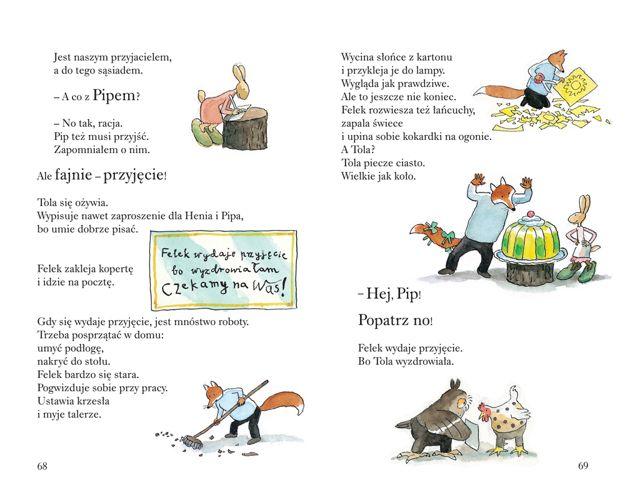
-
 Thank you for your method for mincing jalapeno peppers. I use it!
Przez:domowypatchwork 29Dec2020
Thank you for your method for mincing jalapeno peppers. I use it!
Przez:domowypatchwork 29Dec2020 -
 Thank you!
Przez:domowypatchwork 29Dec2020
Thank you!
Przez:domowypatchwork 29Dec2020 -
 Inka is our chickory coffee. I think that you can use any kind of coffee ...
Przez:domowypatchwork 29Dec2020
Inka is our chickory coffee. I think that you can use any kind of coffee ...
Przez:domowypatchwork 29Dec2020 -
 What a wonderful idea! I will make this with blackberry preserves, without the ...
Przez:Andrea 23Dec2020
What a wonderful idea! I will make this with blackberry preserves, without the ...
Przez:Andrea 23Dec2020 -
 This fish soup looks delicious!
I love soup.
Przez:Andrea 22Dec2020
This fish soup looks delicious!
I love soup.
Przez:Andrea 22Dec2020
How to “cultivate” a bookworm
Everybody probably knows that Poles don't read much. Apparently, last year, one in three Poles didn't read any books, and one in five doesn't have any volumes at home. Actually, recently you are more likely to meet someone with a phone than with a book. It is not hard to figure out that students read the most, and I would like to believe that this doesn't come from the necessity of studying and writing term papers. It is significant that children whose parents read to them in their first years often get into books. We couldn't ask a child to read if at home it isn't customary and television programmes are the only source of information and entertainment. I think that, among other things, parents are responsible for their children's attitude to reading and whether they will grow up to treat books as the promise of an amazing adventure or as a duty, or even worse, as something to prop up a wobbly table.
I'm not an expert, but I am a mum, and I can share with you my experience of how my daughter became a bookworm. I'm aware that sometimes neither our efforts nor wishful thinking are sufficient. Our young man doesn't like to read. He likes football, tennis or model making. Well, each kid is different, but it is worth trying.
Let's suppose, however, that we do like to read and our sprog has made friends with books. We have bought, borrowed, read and encouraged, and we see the first tentative results of our efforts. A time will come when letters aren't just magical symbols and our child will read signboards and advertising banners. This is the time when we should encourage his interest in self-reading.
What should we do to make the difficult process of self-reading easier?
Encourage, don't force. You may start by reading together. In a book divided into chapters your child can read the next titles of chapters. You may also find creatively edited books in which parts of the text are written in a special way, are placed in speech bubbles or are parts of the pictures. For my daughter I found a funny series about sisters. There are always three girls: "The Three Little princesses", "The Three Little Pirates" and "The Three Little Witches" by Emily Bolam and Georgie Adams. The girls have exciting adventures and the pictures in the books encourage children to read longer and longer sentences. The little pirates on the ship named the Lucky Lobster go after the wicked Vanilla Cringe. With the little princesses we solve the mystery of the theft of the time guard's key in Pepper Kingdom. It was funny, cryptic and mysterious.

Now with my little son I am reading a book about the adventures of a greedy fox called Felek, a clever rabbit called Tola, and a comic horned owl called Henio. "Felek and Tola" by Sylvia Vanden Heede is the first part of a series about friendship, little everyday pleasures and changes in the natural world. It turns out that the horned owl may be the dad
dy of a cockerel, the squirrel has morning sulks and the snowman yields pools of water on the floor of his home.
The next step could be abridged versions of known stories with beautiful pictures. They have a small amount of text on the page and are written in bigger fonts. The pages are turned very fast in spite of the arduously written sentences. Suddenly, the young reader has his first self-read book. The motivation for reading grows as fast as a parent's pride.
After that it will only be easier. We should give them more and more long and advanced books, still encouraging, emboldening and praising. Maybe one day we will hear that the best Christmas present is a book. Then you should consider buying an e-book reader, because it may turn out that shopping in a bookshop is as expensive as at a jeweller's, in the library there aren't any interesting new books, and on holiday you should prepare an additional suitcase only for books. And I would like to wish you this kind of problem.





